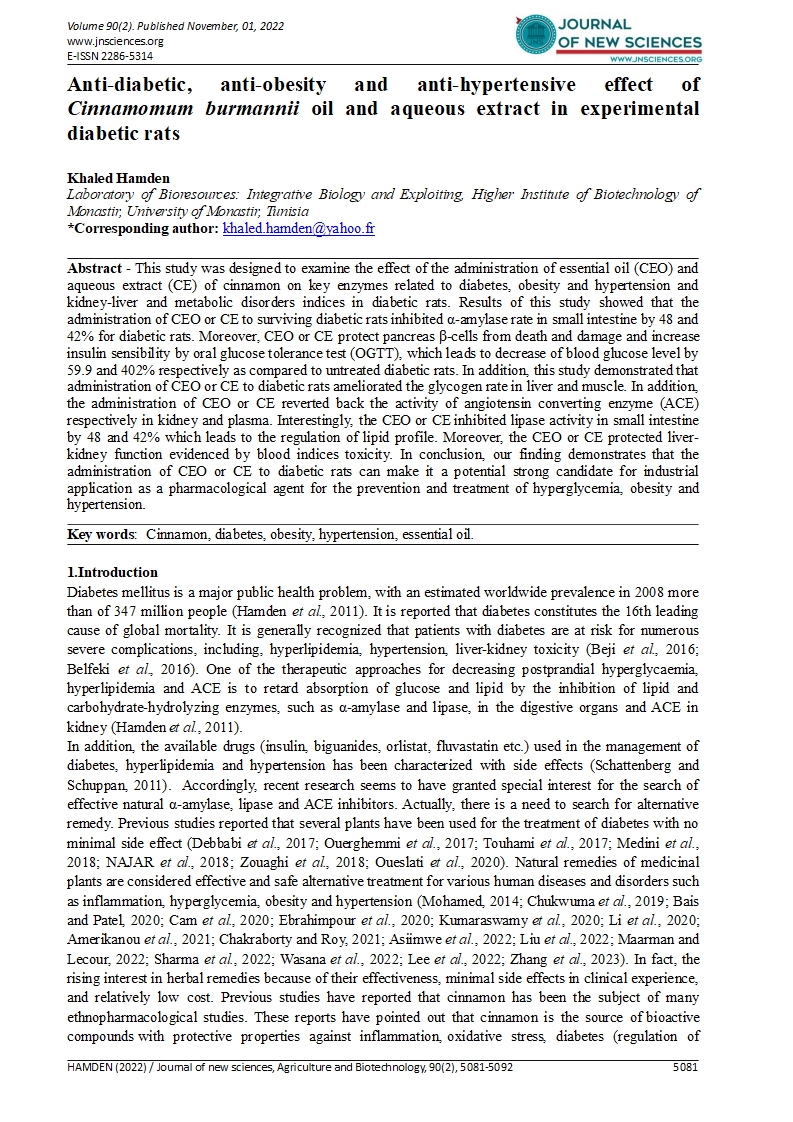

- Category: Volume 90
- Hits: 901
Anti-diabetic, anti-obesity and anti-hypertensive effect of Cinnamomum burmannii oil and aqueous extract in experimental diabetic rats
Khaled Hamden
Laboratory of Bioresources: Integrative Biology and Exploiting, Higher Institute of Biotechnology of Monastir, University of Monastir, Tunisia
DOI: https://doi.org/10.55416/sunb.jns01.2211.09002
Abstract - This study was designed to examine the effect of the administration of essential oil (CEO) and aqueous extract (CE) of cinnamon on key enzymes related to diabetes, obesity and hypertension and kidney-liver and metabolic disorders indices in diabetic rats. Results of this study showed that the administration of CEO or CE to surviving diabetic rats inhibited α-amylase rate in small intestine by 48 and 42% for diabetic rats. Moreover, CEO or CE protect pancreas β-cells from death and damage and increase insulin sensibility by oral glucose tolerance test (OGTT), which leads to decrease of blood glucose level by 59.9 and 402% respectively as compared to untreated diabetic rats. In addition, this study demonstrated that administration of CEO or CE to diabetic rats ameliorated the glycogen rate in liver and muscle. In addition, the administration of CEO or CE reverted back the activity of angiotensin converting enzyme (ACE) respectively in kidney and plasma. Interestingly, the CEO or CE inhibited lipase activity in small intestine by 48 and 42% which leads to the regulation of lipid profile. Moreover, the CEO or CE protected liver-kidney function evidenced by blood indices toxicity. In conclusion, our finding demonstrates that the administration of CEO or CE to diabetic rats can make it a potential strong candidate for industrial application as a pharmacological agent for the prevention and treatment of hyperglycemia, obesity and hypertension.
Key words: Cinnamon, diabetes, obesity, hypertension, essential oil

